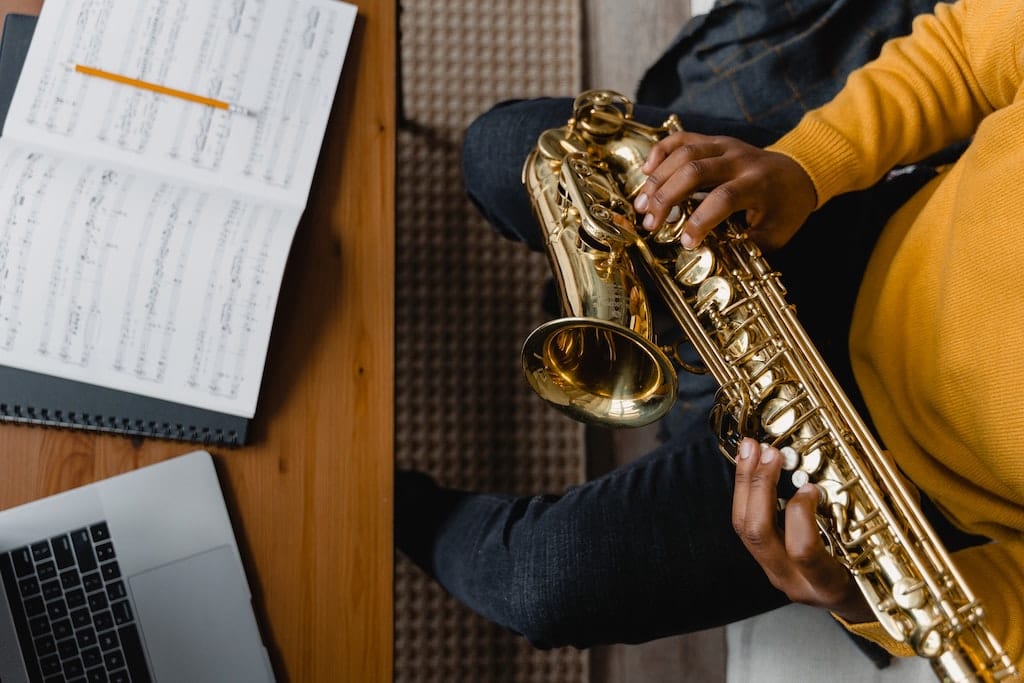Top Ways To Learn The Basics Of Music Theory Fast & Easy

When you hear the phrase “music theory”, it will probably not evoke much interest in you. Just like any theory. Practical activities are much more exciting, aren’t they? Reading black dots on paper, trying to draw the perfect treble clef, and endlessly pondering the Neapolitan Sixth may make you bored and desperate. But every self-respecting musician should know the basics of music theory. And the problem lies not in the music theory but in the wrong approaches to the study. Thus, this article is devoted to such a critical topic.
Steps to Learning
And here, it’s worth noting that if you want to learn the basics of music theory quickly, easily, and on a budget, why not use the World Wide Web for this purpose? The web has made it possible to use many educational resources and logo makers online freely. If you are interested in learning theory but can’t attend classes in your area, you can always contact the Internet for help. It may seem a little tricky initially, but if you use the guidelines below, you’ll soon get caught up in the process and even begin to enjoy learning.
#1 Step: Consider the Extent of Your Knowledge
Can you already play a musical instrument? How long have you been playing? Can you read sheet music? Your previous experience affects how much you need to know, where you need to learn, and how “simplified” that learning should be.
#2 Step: Decide on the Type of Training
Some sites offer free music theory lessons, but to get in-depth knowledge or to be able to get a diploma after your training, and you’ll probably have to pay and provide a lot of personal information. If you’re learning for fun, you may not want to spend a couple of hundred dollars (or more) to learn the names of the notes.
#3 Step: Do a Proper Search
You should thoroughly search for the resources you need to learn the basics of music theory online. However, before you do so, you should determine what particular aspect you are interested in and look for information in that direction. Be prepared that this method can take up a considerable part of your time.
#4 Step: Find an Appropriate Site
You need to review the search results, skip the ones that cost money, seem fraudulent, or don’t match your learning preferences. A good site for learning music theory targets your experience and age level. It is easy to read and allows you to learn at your own pace.
#5 Step: Learn Concepts Step by Step
Many sites offer self-assessment tests after each lesson or block of classes, and you can use them to see how well you’ve learned the material. You can also practice in real life. For example, you can try transposing a piece of music into a different key. You can practice on an instrument, such as a piano (arranged in such a way that it’s elementary to see the notes and the connection between them) and learn at the same time as your program, or you can even try your hand at composing music.
#6 Step: Go Through Some of the Lessons Again if Necessary
You don’t always get it all right the first time, and neither do most people on the planet. So repeating what you’ve already learned is just as valuable as learning the basics of music theory. Plus, studying online will be doubly easier and faster because you can repeatedly revisit particular lessons online.
#7 Forge New Path
It is the most unusual and no less exciting way of all. And it’s about finding new solutions that may not be related to music but will ultimately be very useful in learning about it. Of course, you can interpret this way as you want. We, as an example, suggest the following: get additional (or primary) education in a field that can help your music career in some way. That way, you will always have a Plan B.
#8 Step: Apply Your Newfound Knowledge to Life
The latter way of learning the basics of music theory is the most enjoyable and effective. But, as you know, theoretical knowledge is worthless if you don’t put it into practice, which you’re already eager to do. So choose an instrument to study, improve your skills, start composing music, and enjoy your knowledge and experience.
Some Last Tips
A few final pieces of advice have the attitude to the applicable music theory. Three essential elements of this question are closely related to each other. First of all, if you want to develop fluency in music theory so that it becomes something you can use freely and easily everywhere and always, rather than a tedious chore, you must:
✔️ Memorize all the key signatures.
✔️ Understand the structure of chords and where they fit in the key
✔️ Be able to call any interval from any root note quickly.
It may seem daunting at first, but doing one exercise 99 times out of 100 will help you remember all three items and show you how they relate to each other.
Conclusion
Sometimes you find something complicated, dull, or incomprehensible, so you keep putting it off until later. But once you start, it doesn’t seem as scary as it did in the beginning. Most fears are in people’s heads. That goes for the process of learning music theory as well. So why not change the way you study it. And it’s bound to pay off. After all, agree how cool it is to know how a musical concept or idea works in detail. If you take the advice in this article, you’re sure to succeed.





